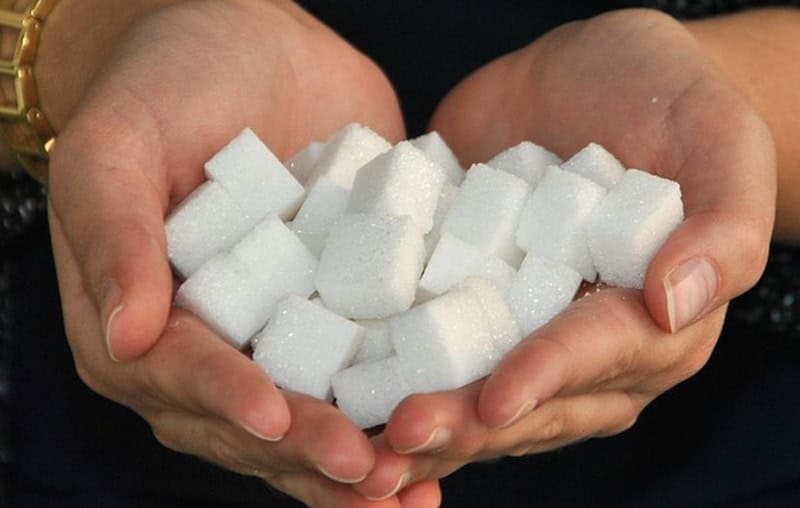A key factor in the beet sugar vs cane sugar debate is how each kind impacts baking.
A key factor in the beet sugar vs cane sugar debate is how each kind impacts baking.
Blog Article
Discover the Uses and Perks of Beet Sugar Vs Cane Sugar in Your Daily Diet
Discovering the distinct high qualities of beet and cane sugar reveals even more than simply their sweetening capabilities; it highlights their one-of-a-kind impacts on health and cooking arts. Beet sugar, known for its refined taste, is typically preferred in delicate desserts, whereas cane sugar, with its tip of molasses, includes splendor to durable recipes. Each type holds its own dietary account and glycemic implications, inviting a much deeper understanding of their duties in a balanced diet plan and lasting consumption practices.
Beginning and Manufacturing Procedures of Beet and Cane Sugar

The distinctive environments and soil types required for expanding sugar beetroots and sugarcane contribute to differences in their farming techniques and geographic distribution, influencing the business economics and sustainability of their manufacturing. beet sugar vs cane sugar.
Nutritional Comparison Between Beet Sugar and Cane Sugar
In spite of stemming from various plants, beet sugar and cane sugar are nutritionally really similar, both largely consisting of sucrose. Each offers regarding 4 calories per gram, converting to about 16 calories per tsp. Structurally, both sugars are composed of roughly 99.95% sucrose, with very little amounts of other compounds like wetness and trace minerals, which do not dramatically modify their dietary accounts.

Inevitably, when choosing between beet sugar and cane sugar based on nutritional material alone, both deal the same benefits and downsides as they are essentially kinds of the same molecule-- sucrose, offering quick energy without other nutrients.
Influence on Wellness: Glycemic Index and Caloric Material
Checking out even more into the results of beet sugar and cane sugar on wellness, it is essential to consider their glycemic index and caloric content. Both sugars are identified as sucrose, which is composed of glucose and fructose. This composition leads them to have a comparable influence on blood glucose Resources levels. The glycemic index (GI) of both beet and cane sugar is around 65, classifying them as high-GI foods, which can trigger quick spikes in blood sugar levels. This is a vital aspect for individuals managing diabetic issues or those trying to maintain their energy levels throughout the day.
Each sort of sugar consists of about 4 calories per gram, making their caloric material matching. For those keeping track of calorie consumption, particularly when managing weight or metabolic health problems, recognizing this equivalence is important (beet sugar vs cane sugar). Too much consumption of any type of high-calorie, high-GI food can add to health problems such as excessive weight, heart illness, and insulin resistance.
Environmental and Economic Considerations of Sugar Manufacturing
Beyond health influences, the production of beet and cane sugar likewise increases substantial environmental and economic problems. Sugar beet growing often tends to require cooler climates and has a lower geographical impact contrasted to sugar cane, which thrives in tropical areas. Both plants are extensive in terms of water use and land profession, possibly leading to logging and water scarcity. Economically, the global sugar market is extremely unstable, influenced by modifications in global profession policies and subsidies. Numerous countries incentivize visit this web-site sugar production with monetary assistance, skewing market value and influencing small farmers adversely.
Furthermore, the usage of pesticides and fertilizers in both beet and cane sugar growing can result in soil degradation and contamination, additional affecting biodiversity and regional water bodies (beet sugar vs cane sugar). The article choice in between cultivating sugar beet or cane commonly rests on local environmental problems and financial elements, making the sustainability of sugar manufacturing an intricate concern
Culinary Applications and Flavor Distinctions
While the ecological and economic facets of sugar production are without a doubt considerable, the choice in between beet and cane sugar also affects culinary applications and taste profiles. Beet sugar, obtained from the sugar beet plant, is known for its extremely neutral taste.
Cane sugar, drawn out from sugarcane, usually retains molasses traces, which pass on an unique splendor and depth. The minor variant in moisture content between beet and cane sugar can impact the structure and uniformity of meals, making cane sugar a favored selection for details dishes that profit from its unique homes.

Verdict
Finally, both beet and cane sugar have distinctive beginnings and manufacturing processes, providing similar nutritional accounts with mild distinctions in sodium content and flavor. While their influence on wellness, specifically concerning glycemic index and calories, is comparable, the option in between them commonly steams down to environmental, economic variables, and certain culinary needs. Recognizing these elements can direct consumers in making educated decisions that straighten with their health and wellness goals and taste preferences.
Report this page